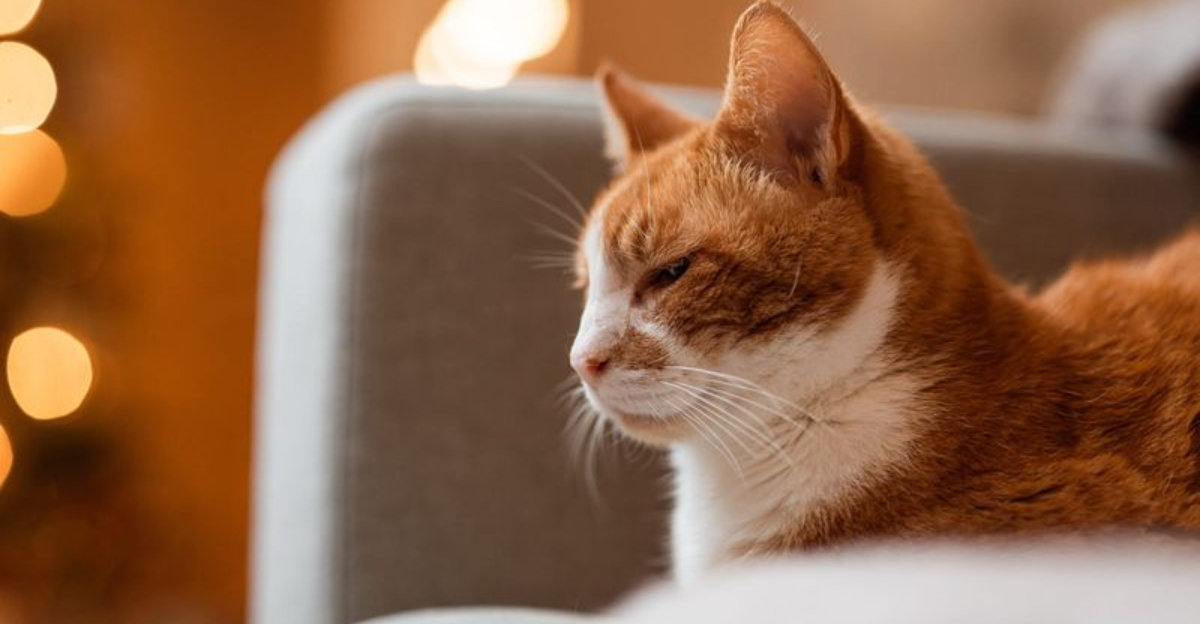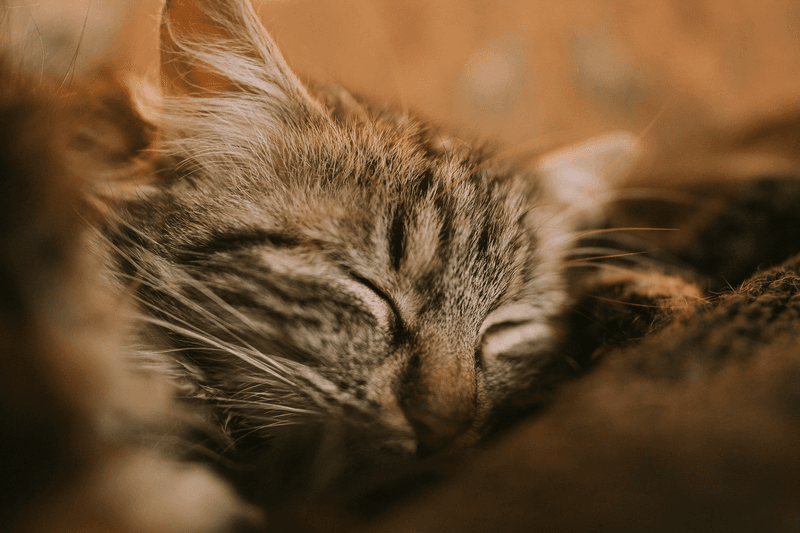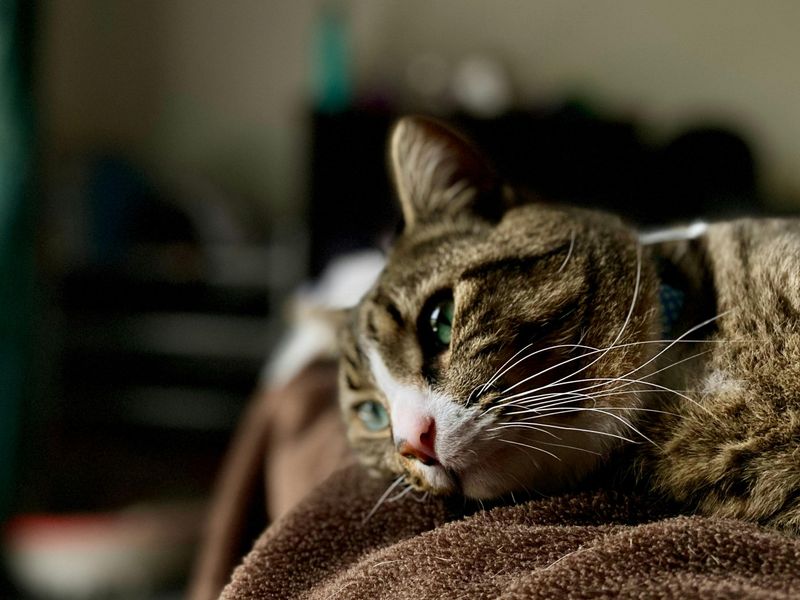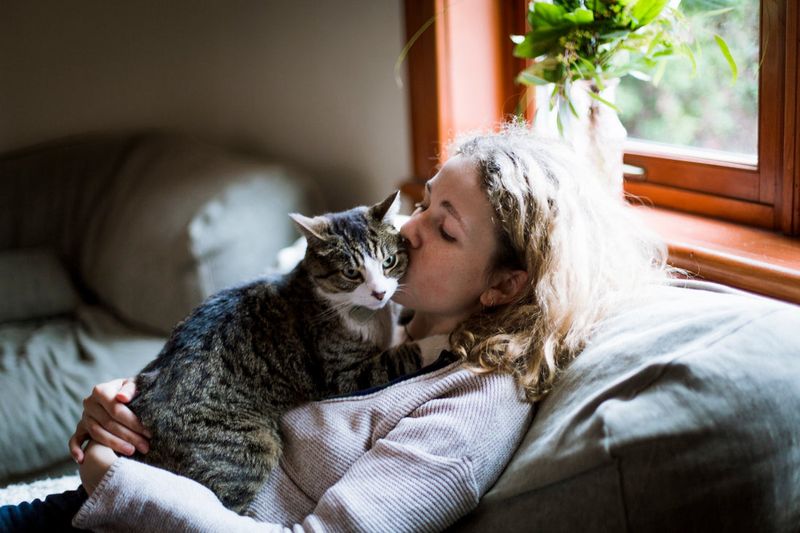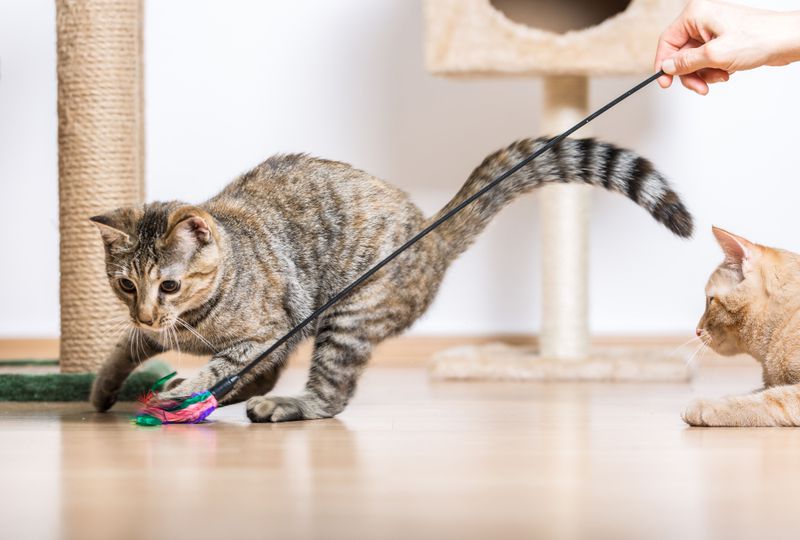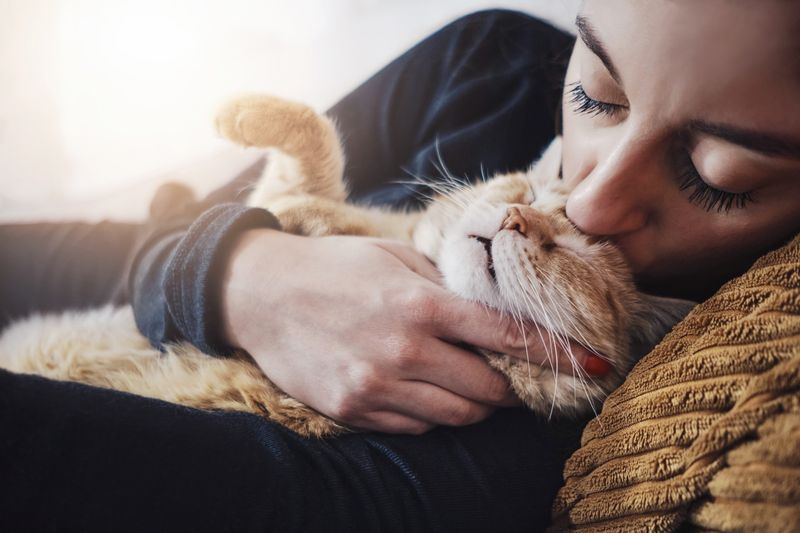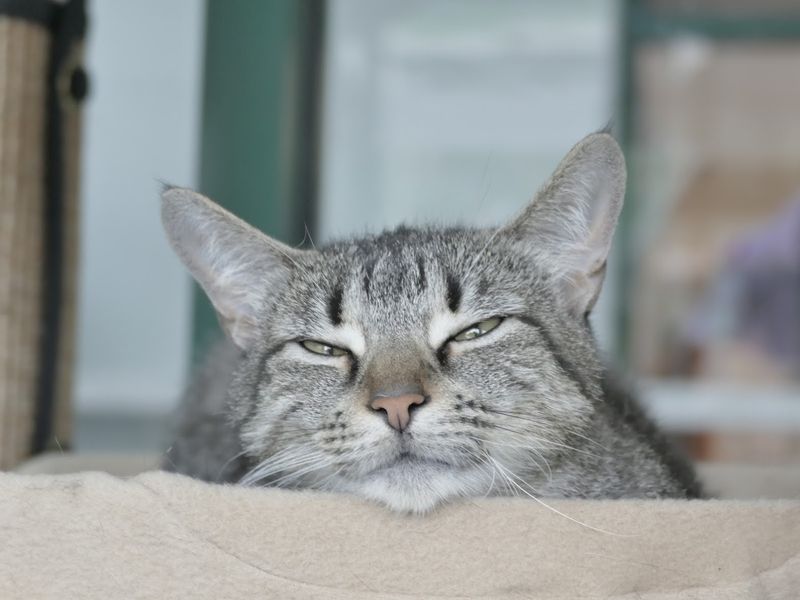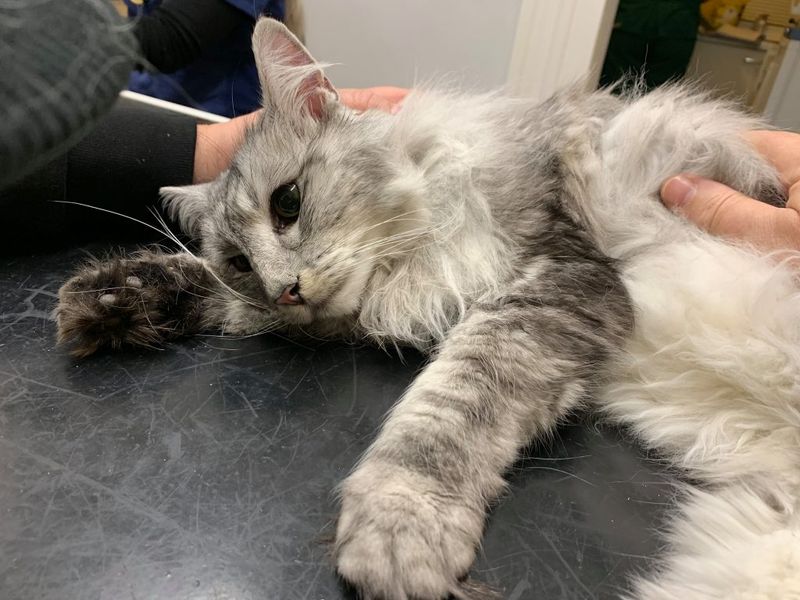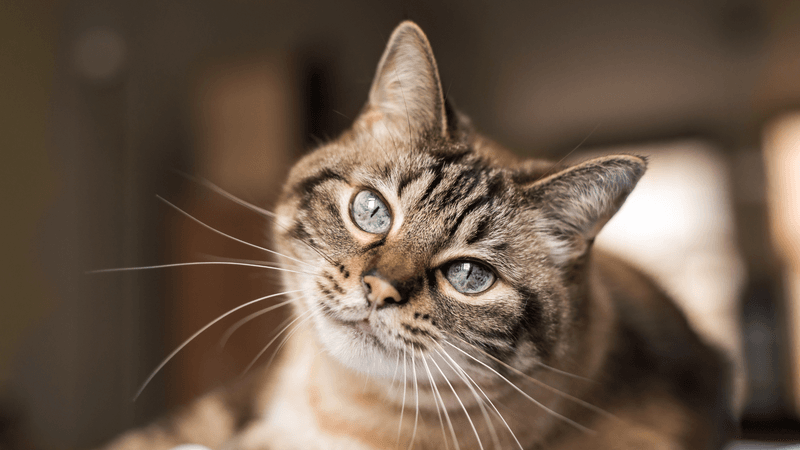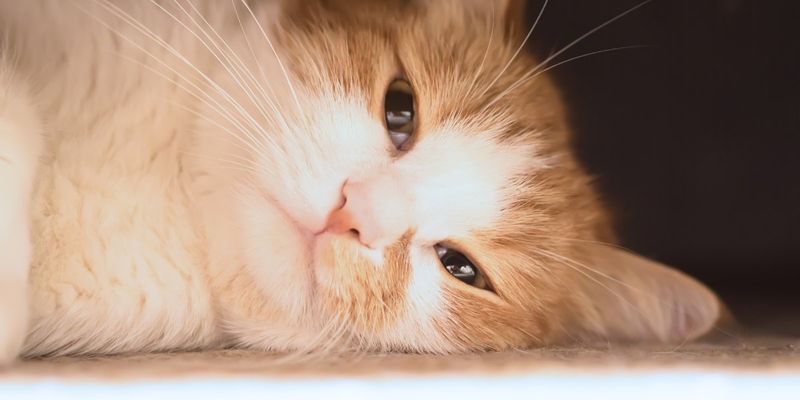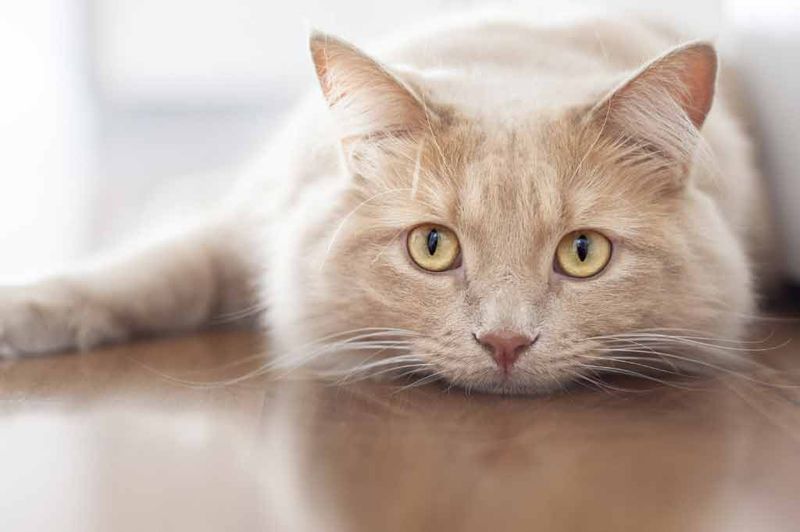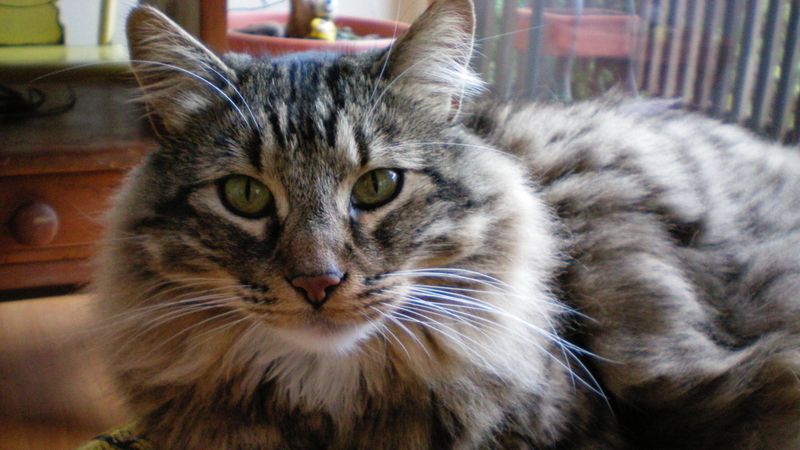📖 Table of Content:
- 1. Purring Vibrations That Heal
- 2. Constant Companionship Without Demands
- 3. Physical Touch Without Judgment
- 4. Routine Maintenance During Chaos
- 5. Mindful Presence Teachers
- 6. Emotional Radar Systems
- 7. Distraction Through Play
- 8. Permission to Rest Together
- 9. Non-Verbal Communication Experts
- 10. Living Links to Lost Loved Ones
- 11. Acceptance Without Conditions
- 12. Guardians of Private Grief
- 13. Responsibility That Prevents Isolation
- 14. Heart Rate Regulators
- 15. Models of Resilience
When sorrow envelops the heart, cats often emerge as unexpected sources of solace. These gentle creatures possess an intuitive ability to detect shifts in human emotions. Their quiet presence offers a unique form of comfort during moments of sadness.
Felines respond to grief with subtle gestures that convey empathy and understanding. They may curl up close or softly purr, providing a calming influence without the need for words. This silent companionship can create a sense of peace amid emotional turmoil.
The healing power of a cat’s presence can sometimes surpass what human interaction achieves. Their unwavering loyalty and gentle nature foster a safe space for emotional recovery. In times of loss, these furry friends become steadfast allies in the journey toward healing.
1. Purring Vibrations That Heal
The rhythmic purr of a cat vibrates at frequencies between 25 and 150 Hz, which scientists have discovered can promote healing and reduce stress. After a loss, these gentle vibrations work like a natural form of therapy. Cats often increase their purring when they sense distress in their humans.
Your feline friend might curl up on your chest, their purr resonating through your body like a soothing meditation. Many grief counselors recognize this therapeutic effect, noting that the physical sensation of a purring cat can ground someone experiencing overwhelming emotions.
2. Constant Companionship Without Demands
Unlike well-meaning friends who might expect conversation or response, cats offer presence without pressure. They sit quietly beside you, asking nothing but giving everything through their simple company.
During grief, this undemanding companionship becomes precious. Your cat doesn’t require explanations about your feelings or expect you to put on a brave face. Many grieving people report that their cat’s consistent presence throughout difficult days provided an anchor when everything else felt unstable. This silent support creates space for processing emotions at your own pace.
3. Physical Touch Without Judgment
The warm weight of a cat against your body releases oxytocin, the bonding hormone that reduces anxiety. This gentle pressure therapy works similarly to weighted blankets used for emotional regulation. Cats instinctively know when to offer physical contact.
Your feline companion might press against your leg or curl into your lap precisely when tears start falling. Touch deprivation often accompanies grief, especially for those who have lost a spouse or partner. A cat’s physical presence partially fills this void, providing comfort through fur-therapy that soothes the nervous system without the complexity of human interaction.
4. Routine Maintenance During Chaos
Cats thrive on a schedule, demanding meals and attention at regular intervals. This natural clock-watching behavior provides structure when grief has demolished normal routines. The simple act of feeding your cat each morning creates a reason to get out of bed.
Their predictable needs establish anchor points throughout the day when everything else feels adrift. Grief experts often recommend maintaining basic routines as a coping strategy. Your feline friend enforces these patterns naturally, gently nudging you back toward normalcy with their consistent expectations for food, play, and care.
5. Mindful Presence Teachers
With effortless mindfulness, cats live entirely in the present. Their attention to small joys, like sunbeams or breezes, highlights beauty’s persistence through sorrow. Observing their contentment can offer respite from sadness.
Their simple joy becomes contagious, offering brief respites from pain. Many people find that mimicking their cat’s ability to be present helps manage overwhelming emotions. The way cats fully engage with small moments provides a natural template for mindfulness practices recommended by grief counselors.
6. Emotional Radar Systems
The sensitivity of cats to human feelings is truly impressive—they can detect subtle changes in your body chemistry, pulse, and behavior. This natural emotional antenna means they often respond to your sadness before you are fully aware of it. Your feline friend might become especially watchful during emotional challenges.
Many cat owners report their pets refusing to leave their side during particularly difficult grief moments. Research suggests cats can smell biochemical changes associated with emotional distress. This heightened awareness allows them to provide support precisely when needed most, often appearing suddenly when tears begin or when memories trigger emotional waves.
7. Distraction Through Play
The antics of a playful cat create moments of unexpected laughter during grief. These brief respites from sadness allow emotional breathing room and remind you that joy still exists. Cats’ silly behaviors—from midnight zoomies to paper bag adventures—provide natural interruptions to grief’s heaviness.
The physical act of playing with your cat also releases endorphins that temporarily counteract depression. Grief counselors often recommend finding small moments of normality and happiness. Your cat’s playful nudges toward interaction serve as built-in therapy sessions, gently coaxing you toward healing moments without forcing happiness.
8. Permission to Rest Together
Grief exhausts both body and mind, creating profound fatigue that’s often misunderstood by others. Cats normalize rest through their own natural cycles of activity and deep sleep. Your feline friend might curl up beside you during afternoon naps or long evenings on the couch. Their peaceful presence validates the need for physical recovery during emotional processing.
Sleep disturbances commonly accompany grief. The rhythmic breathing of a sleeping cat nearby can regulate your own breathing patterns, potentially improving sleep quality during difficult times. Their warm body also provides comfort during long nights when memories feel most acute.
9. Non-Verbal Communication Experts
Cats communicate volumes without words, connecting through slow blinks, gentle head-butts, and tail positions. This silent language becomes precious when grief leaves you without words to express your pain. The slow blink of a cat—often called a “kitty kiss”—offers unconditional acceptance when you feel most broken.
Their ability to communicate care without speech matches grief’s wordless nature. Many people find traditional conversations exhausting during bereavement. Your cat’s non-verbal support system requires no explanations or verbal processing, allowing connection without the pressure to articulate complex emotions that often defy language.
10. Living Links to Lost Loved Ones
When cats have been shared with those we’ve lost, they carry the essence of those relationships and memories. Their presence today serves as a bridge connecting us to the past. The cat that used to sit in your departed mother’s lap now sits with you, symbolizing an unbroken thread amid profound loss. These connections help us hold onto the love and memories of those no longer here.
Many bereaved people report finding special comfort in animals who knew their deceased loved ones. Your cat’s unchanged affection offers reassurance that love persists beyond loss, providing tangible evidence that parts of your relationship with the departed continue through shared connections.
11. Acceptance Without Conditions
There’s something special about cats—they accept you without judgment, no matter how many tears you shed or emotional breakdowns you have. Their quiet companionship is a constant, whether you’re thriving or falling apart. As grief brings waves of anger, sorrow, and emptiness, your cat stays close, offering steady affection that never wavers, even when you barely recognize yourself.
Bereaved people often worry about burdening others with their ongoing pain. Your feline friend’s acceptance creates safe space for authentic emotion without fear of rejection, criticism, or the dreaded “aren’t you over this yet?” that sometimes comes from humans with limited understanding of grief’s timeline.
12. Guardians of Private Grief
In our most vulnerable states, cats stand silently by, guarding our secrets with unwavering loyalty. Their calm presence during personal sorrow provides a unique kind of support—free from the complications of human relationships. Your feline friend might be the only one who truly sees your private pain.
This private witnessing validates feelings too raw to share with others. Grief often includes emotions people feel uncomfortable expressing publicly—rage, despair, questioning faith. Your cat creates sacred space for these necessary aspects of mourning, allowing full expression of complex feelings without fear of judgment or unwanted advice.
13. Responsibility That Prevents Isolation
Caring for a cat creates necessary connections to the world when grief tempts you toward isolation. Their needs ensure you maintain minimal functioning even on the darkest days. The simple act of refreshing water bowls or changing litter provides purposeful movement when motivation disappears.
Your cat’s dependence creates gentle accountability that prevents complete withdrawal. Mental health professionals recognize that caring for pets provides crucial structure during bereavement. Your feline friend’s needs create natural bridges back to routine and responsibility, establishing stepping stones toward healing without overwhelming demands.
14. Heart Rate Regulators
Studies show that petting cats lowers blood pressure and reduces heart rate, creating physiological calm during grief’s emotional storms. This natural regulation helps manage the physical symptoms that often accompany bereavement. Your cat’s rhythmic breathing can synchronize with yours during close contact.
This phenomenon, called entrainment, helps stabilize erratic breathing patterns common during crying or anxiety. Grief creates significant physical stress through cortisol production. Regular interaction with your cat stimulates oxytocin release, directly counteracting these stress hormones. The simple act of stroking your cat’s fur creates measurable changes in your nervous system, temporarily relieving grief’s physical burden.
15. Models of Resilience
Cats demonstrate remarkable resilience, adapting to change and recovering from their own traumas. Their natural ability to find new joy after difficulty models healthy grieving. Rescued cats particularly showcase resilience—their capacity to trust again after hardship offers living proof of healing’s possibility.
Watching your cat’s adaptability provides hope when your own recovery seems impossible. Grief often includes fear that joy will never return. Your feline friend’s continued capacity for play, curiosity, and contentment—despite whatever difficulties they’ve faced—serves as daily evidence that happiness can coexist with past pain.
